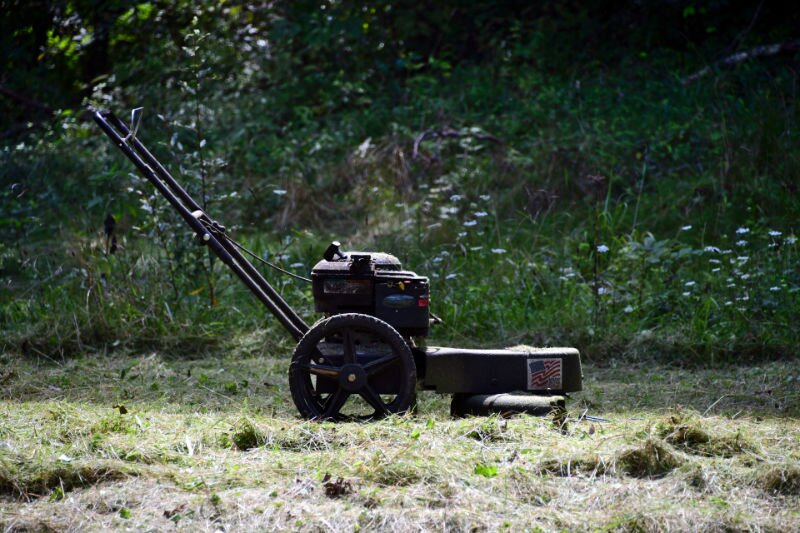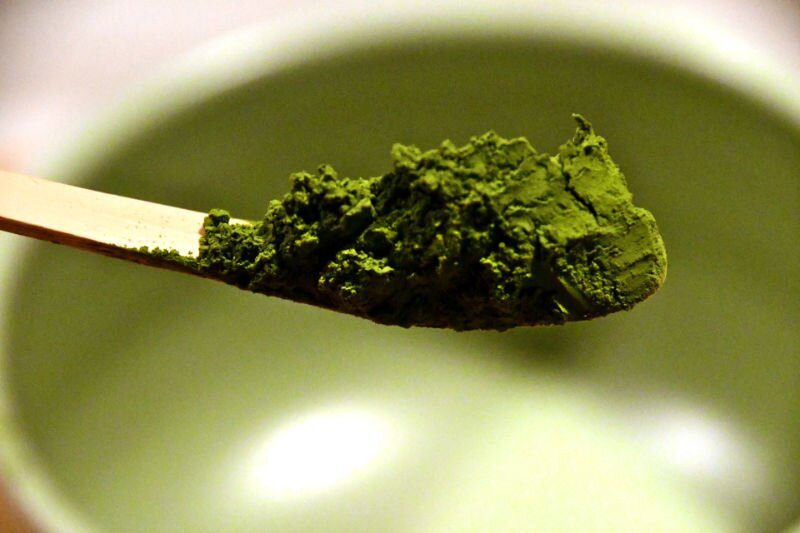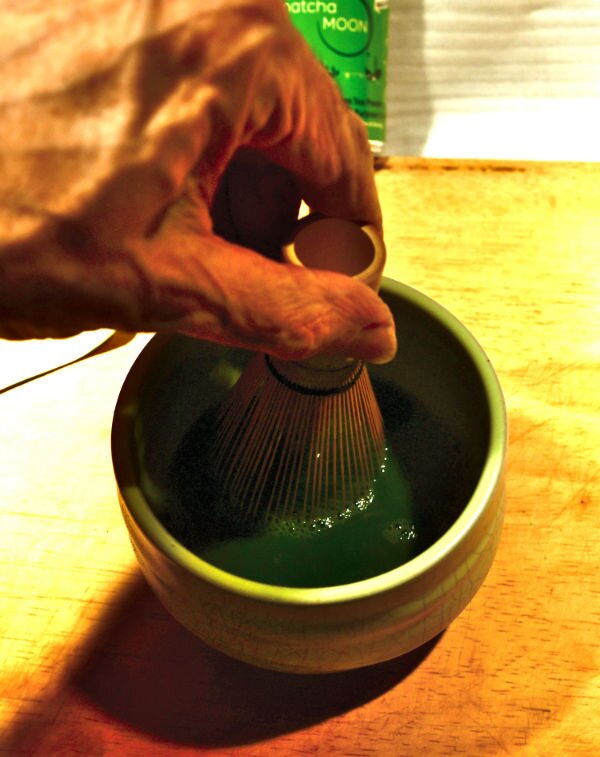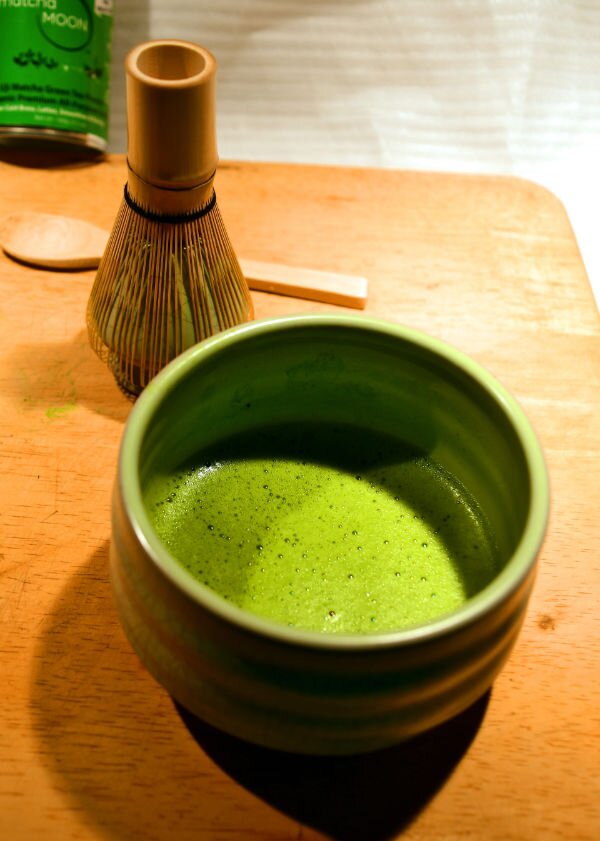
The mowing is finally done, at least for now, and the whole area carries the invigorating scent of newly mown grass.
My amazing Swisher mower pulled through like a champ yet again. They make ‘em good in Missouri, except that when a friend overseas asked me about it, I checked and learned that it is no longer manufactured, which is a shame.

Mowing is good exercise, and no matter what stage you are in life, exercise is important. The rule is do all the exercise you think you can, then about 10 percent more. Our bodies, it seems, default to “lazy” mode. Take charge!
Just as important as exercise is nutrition. Our bodies, it seems, also default to eating stuff that’s not good for us, but again we can take charge.
We’re always looking for easy remedies, the pill or something we can take that solves all our problems. The once semi-respectable Mike Huckabee, who will now go on television and flack for anything, it seems, is among the patent-medicine and other nutritional product tub thumpers who join lawyers and a bedding manufacturer in keeping Fox News on the air. But there aren’t many easy remedies.
Having said that, I’m here to tell you about one, something you ought to be consuming every single day. It won’t just prevent your feeling worse, it will make you feel better. It is really good for you. And unlike the drummers for overpriced and questionable products, I do not benefit in any way from telling you about it, beyond the belief that if you listen and follow my advice, people I like will live longer and happier lives.
You should be drinking matcha every day. Not every so often, not as the occasional novelty, but as part of your daily routine. At its best, matcha, too, smells like freshly mowed grass, and tastes, well, green.
Matcha?
Before original sin gave rise to dark-side entities such as “marketers” who would invent words like “superfoods,” a particular formulation of green tea was known to possess remarkably beneficial properties. The very topmost leaves of the tea plant were harvested in early spring, immediately dried before the fermentation that gives us black tea could take place, and ground to dust. This dust, mixed in water of the proper temperature, produces a drink that is good for body, mind, and soul. Later, it was learned that the qualities of those early leaves could be enhanced by covering the plants for the month or so before harvest — the plants would work to make up for the lost sunlight by pumping all the goodness they could muster into those shaded leaves.

The leaves would go on to be ground, as I said, to dust between chilled rock grindstones. “Matcha” is literally “ground tea.” The dust then has to be carefully stored, because it is delicate stuff.
Its effects on those who consumed it are so salutary that a whole culture grew up around it. To this day, people in Japan and elsewhere spend months studying and learning the tea ceremony, a body-mind-soul exercise that combines ritual with deep meaning, that lasts for hours. It’s a fascinating subject, but that’s not what we’ll discuss today. We’re here to think about that fine green dust and the goodness it can impart even outside the ceremony it so richly deserves.
There’s very little in the world that’s better for you than matcha.
How good for you?
It contains powerful antioxidants called catechins. A cup of matcha contains as much as 137 times as much of these highly beneficial compounds as a cup of regular green tea, which was already very healthful.
Its antioxidants do much to increase good cholesterol and decrease bad cholesterol.
It may prevent damage to your liver and kidneys, even if you already have diseases that stress those organs.
It is good for your memory, alertness, and reaction time, but because it contains a compound called L-theanine it doesn’t make you jittery. In fact, it increases alpha wave levels, producing alert relaxation and overpowering stress.
It has powerful anti-cancer effects. It is high in a substance called epigallocatechin-3-gallate or EGCg, which has demonstrated anti-cancer properties. EGCg is one of the rare compounds that can traverse the blood-brain barrier. Research suggests it might be especially effective in preventing skin, prostate, lung, liver, and bladder cancers. Some of the research began when it was noticed that people in areas where lots of matcha is consumed had very low rates of lung cancer, even though the incidence of smoking in those areas was very high. It has likewise been deemed effective in preventing stomach cancer.
It reduces the incidence of heart disease and the likelihood of stroke.
It makes exercise more effective and aids in weight loss. (That’s why most weight-loss supplements list green tea extract as an ingredient.)
Its antioxidants are a boost to the immune system.
It even fights bad breath! EGCg regulates the bacteria in your mouth, eliminating the ones that create sulfur compounds that make up bad breath. It also is apparently effective in reducing cavities and gum disease.
And it’s good for your skin.
That’s just part of it. The list goes on.

Then there’s all the anecdotal stuff. For instance, I’ve found it to be strong in its anti-procrastination effects. That’s not a joke. Within a few days of starting to drink matcha daily I discovered that I was doing more. Its was like this: When normally I might think, “I need to remember to take care of that,” I now think, “I’d better take care of that” and I do. This is the mood-altering drug I spent too much of my earlier life hoping for (and failing to find). Now, if something breaks or some unexpected event disrupts my plans, I’m dealing with it rather than whining about it. For me, it has proved to be powdered green optimism.
It contains caffeine, but even a strong cup of matcha contains less than a cup of coffee does. And the L-theanine rounds off the sharpness of the caffeine that is there. But it is caffeinated enough: as an experiment, I gave up coffee a week ago and instead have had an extra cup of matcha daily. There have been no symptoms of coffee withdrawal — and I drink a pot of strong black coffee each day — and falling asleep, even a nap soon after consuming a cup of matcha, is easier.
Typical matcha preparation takes much from the Japanese tea ceremony. Water is heated to \~175 degrees — no hotter, because a higher temperature cooks and destroys some of the good stuff. Some of the water is used to heat a ceramic bowl. Then it is poured out and the bowl dried. Using a small spoon, one or two grams (two grams is one teaspoon) of matcha powder is placed in the bowl, followed by a small amount of the hot water. (There are those who insist that the tea be passed through a fine strainer at this point, to eliminate lumps. I disagree.) A special bamboo whisk is then used to whip it into a frothy liquid. (While the whisk, called a chasen, is traditionally moved back and forth only, but anyone who has used mug soap in shaving will have no problem making matcha.) More hot water is often stirred in, to make a proper cup of tea. The ceremony’s tradition is that the tea be consumed in three and one-half sips, the final one-half when you loudly slurp up the froth and remaining bits of matcha, demonstrating how much you enjoyed it.
I’ve observed that matcha is improved by the ritual. When I take time to have matcha this way, I try to remember to give thanks for the creation of such amazing substances and our ability to discover them. But we could all benefit from a calm period of reflection each day anyway. The matcha is a bonus, a reminder, and a reward.
Just about none of the procedure described is necessary, though, to gain matcha’s health benefits. (One study did somewhat puzzlingly suggest that matcha made using a chasen is better for its drinkers than that prepared using some sort of stick blender or a little bespoke battery-powered mixer. I do not know why; I’m not sure anyone does.)
Okay, you ought to be sold by now. So what’s the catch? Well, there isn’t any, though there are some caveats. One is that the taste itself takes a little getting used to; another is that finding decent matcha at a decent price can be complicated.
A cup of matcha usually has a noticeable grassy smell. It is bright green and it smells bright green. It tastes bright green, too, which is not to everyone’s liking — and all but the best (and most expensive) matcha can be kind of bitter and astringent. My thought is that coffee, wine, and liquor take some getting used to also. Nobody ever liked his first beer or his first oyster. In my experience and that of some friends, you don’t like matcha then, after having it daily for a few days, experience an unexpected craving for its flavor.
But if you just can’t stand matcha you still can consume it. It’s popular to mix it with milk and make a latte. Some people sweeten it. (I haven’t tried either of these things.)
I enjoy my morning matcha, but I’ve also mixed it into my morning breakfast concoction with good effect. (My concoction: 12 ounces of oat milk, 25 grams of whey isolate, 25 grams of more general milk protein with minerals and some vitamins, 3.5 grams of creatine, 10-12 grams — a heaping tablespoon — of raw cocoa powder, and about 2 grams of matcha powder. Which I consume with a piece of fruit, usually a banana.) If you want to eliminate the matcha taste entirely, mix a couple of grams of matcha powder into a glass of V8 juice — the taste goes away, though the green matcha turns the V8 brown. (I’ve made a habit of adding it to my V8, while the coffee experiment was just an experiment — a vacation, not a relocation. That said, I’ve come to like matcha better.)
The strength of the flavor depends largely on the quality of the matcha powder used. There’s some that has a light and delicate flavor, while there’s some that is so strong you’d think it was scraped from the underside of the mower; you’d have no trouble convincing someone that a cup of the stuff was pond water teeming with algae. There’s some pretty terrible matcha out there. It depends on what you buy, so we’d better discuss that aspect.
One hears of two, perhaps three, grades of matcha: Ceremonial, culinary, and, sometimes, general or latte-grade. Ceremonial is the very best, and the very best ceremonial matcha is both excellent and expensive. If the product is as claimed — more about this in a minute — ceremonial matcha is light and pleasing in flavor and aroma, with little or no bitterness or astringency. There’s even a hint of sweetness. Culinary matcha is the other end of the scale. It is meant to be mixed with other stuff. As its name suggests, it’s used in cooking. (The problem here is that to cook matcha above 175 degrees is to destroy some of its beneficial qualities). It tends to have a strong taste, usually with some bitterness and considerable astringency. The medium or latte grade is suitable (some would say marginally so) for matcha as tea, but it’s also useful in making latte and other drinks. You can think of it as being like wine or other liquor: some is best suited for drinking neat, while other varieties are better suited to wine coolers or mixed drinks, and some only for cooking. If you’re making latte or baking a cake, using expensive ceremonial matcha would be a waste. Fortunately, the physiological benefits of all three are the same or very close to it.
Matcha tends to cost more than you’d expect. There are super-duper versions that cost $100 per ounce and even more, and I hope they’re worth it. I do not know and absent a huge unexpected windfall won’t find out. There are super-cheap versions — I got a pound of supposedly mid-level matcha powder for $20, a mistake I won’t be making again. It was awful, though it wasn’t until I’d had some of the good mid-grade stuff did I realize just how awful. If I had livestock, I’d sprinkle it on their food — it’s fit for those who usually eat hay. (I didn’t realize until after I had it at home that the stuff was made in China, so who knows what it is. It seems to be to matcha as hide glue is to Jello.)
There are numerous brands available and no real industry-accepted standards that I’ve found, but there are hints that are very helpful. First, matcha is from Japan. Second, the chance of matcha being good improves if it is from the Kyoto Prefecture. Third, those odds increase further if it is from the Kyoto town of Uji. These data are helpful, but they are not enough. (It’s easy to get this far: if a brand is from Uji, the company will not make a secret of it.) However, there are excellent matcha from outside of Uji and even Kyoto; they just take more work to identify.
The grade, of course, is to be considered, and there are other signs of quality. “First harvest” matcha is likely to have the attributes that make it good for ceremonial and good general grade. “Summer harvest” or “second harvest” means it was picked later in the season and while it may well be just fine, it’s not likely to be superb quality. It is also much less expensive. It’s a fact, too, that “organic” matcha is unlikely, ceteris paribus, to be as mild and well-rounded in flavor as matcha that isn’t organically grown. The reason for this is simple: the organic plants have to be tougher to fight off insects and other pests and get by without fertilizer. (People who know nothing often go off about heavy metals and radiation in matcha. Reputable vendors test for these things and publicize the results.)

You can find reviews (check to make sure that the number one choice doesn’t also have a prominent advertisement in the publication, though), and many companies offer selections of small packages of each of their offerings, so you can choose where on the price/quality continuum your billfold and taste buds find accommodation.
It could be that over time I might become a matcha enthusiast to the extent of sampling many brands and learning to discern even very subtle differences, but my interest grows from its being very good for you, so its being palatable is for now enough. I’m a little discerning, but am scarcely a sophisticated matcha consumer. Having checked around a little, I found reliable products from the Matcha Moon company. I was impressed by their honesty. Of their “Daily Zen” matcha, they say: “This all-purpose matcha can be enjoyed unsweetened as a straight tea, but is best sweetened, mixed with milk as a latte, blended as a smoothie, or mixed as a baking ingredient in your favorite matcha recipes.” This is the matcha you’d have every day. It’s good enough for tea, but if really great tea is your goal, they have other, more expensive products. As the name suggests, this is my daily matcha, and I think it’s oishii — delicious. You can get it for ~$30-35 in a 100-gram — a little over 3.5 ounces — tin. That for me is a month’s supply, but for many daily drinkers it could last twice as long. (Don’t get it in much bigger quantities unless you’re going through a lot of it. It needs to be kept cool and away from light, humidity, and air, and even well stored it should be consumed within a year of being harvested, which is usually in the spring. When it’s refrigerated, it should be opened, the tea portioned, and the container quickly resealed to avoid condensation.)
A single ounce (well, 30 grams) of their “Pure Zen” ceremonial — “Best enjoyed unsweetened as a traditional straight matcha tea” — costs nearly as much as the 3.5-ounce tin of the daily stuff. I keep one of the small tins of that here, too, in a sealed bag in the freezer, but it’s for special occasions only, the way you might have a $100 bottle of single-malt Scotch. I’m set in case Manami drops by unexpectedly (unless she’d prefer $100 Scotch). The company has a grade in between, “Spring Zen,” which I haven’t tried but will soon.
I don’t propose that Matcha Moon is the best; I would guess that it isn’t, at least by some measures. But its reputation is good. Its tea is from Uji. And its prices are acceptable. I might find better, but in the search I’d spend a lot of money on matcha that isn’t better, and a lot more on matcha that’s only a little better.
You can find it at the usual places online and from the company itself. The price is pretty much the same no matter where you get it.
And even if you purchase considerably cheaper matcha, the differences are likely to be aesthetic rather than nutritional. Cheap matcha tends to be more yellow or olive in color — the good stuff is an almost unnaturally bright green, both in the tin and in the prepared tea — and won’t taste as good. What I would caution against is offers that seem too good to be true, particularly in the form of name brands at very low prices. Counterfeit products are not unknown. Or it could be that the matcha is real and that it was excellent — three years ago, but now it’s long expired.
Okay, I think I’ve written enough to get you started if you’re interested.
Which you should be, because while many products can change your life, matcha can change it for the better, in a way you can feel.

Dennis E. Powell is crackpot-at-large at Open for Business. Powell was a reporter in New York and elsewhere before moving to Ohio, where he has (mostly) recovered. You can reach him at dep@drippingwithirony.com.
You need to be logged in if you wish to comment on this article. Sign in or sign up here.
Start the Conversation